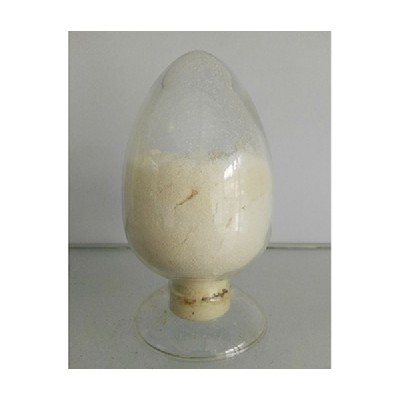Wholesale of chemical raw materials in Guangdong: boron nitride ceramic moisture absorption
Now let me introduce the moisture absorption of boron nitride ceramics. We are a manufacturer of boron nitride, hexagonal boron nitride and other boron series chemical raw materials. We have 50 years of production process experience. Do you know the moisture absorption of boron nitride ceramics? How to reduce moisture absorption of boron nitride ceramics? Let's have a look!
Ceramic materials are indispensable materials in human life and modernization. It is one of the important inorganic non-metallic materials after metallic and non-metallic materials. Boron nitride (BN) ceramics is the first compound found in 1842. The research on BN materials abroad began after World War II, but it was not officially developed until 1955 when researchers treated BN by hot pressing. Boron nitride (BN) ceramic is a kind of ceramic matrix composite. Ceramic matrix composite is a kind of composite material with ceramic as matrix material and fiber, whisker or particle as reinforcement. The ceramic matrix can be high-temperature structural ceramics such as silicon nitride and silicon carbide. These advanced ceramics have excellent functions such as high temperature resistance, high strength and stiffness, light weight and corrosion resistance. Their fatal defect is brittleness. Under stress, cracks and even fractures will occur, resulting in material failure. The use of high strength and high elastic fiber composite matrix is a method to improve the toughness and reliability of ceramics. The fiber can prevent crack propagation and obtain fiber-reinforced ceramic matrix composites with good toughness.
Boron nitride ceramic is a product made of boron nitride. It inherits the characteristics of this special material and shows the advantages of high temperature resistance, adhesion, corrosion resistance and good heat conduction function. It has great potential for the use of high-temperature components such as aeroengine turbine blades, rocket engines and advanced nuclear power in thermal insulation / hot space. However, boron nitride is easy to absorb moisture. In order to deal with the hygroscopic characteristics of boron nitride ceramics, we can appropriately increase the calcination temperature, increase the particle size, and add some additives, such as TiO2.

Physicochemical functions of boron nitride ceramics
(1) Electrical function: because the dielectric constant and dielectric loss of BN products are small, they can be widely used in high frequency and low frequency regions. Its dielectric strength is 4.5 times that of alumina, and its dielectric constant is half that of alumina. Its electrical function is very different from that of graphite. It is as non-conductive as oxide ceramics at high temperature. It is an electrical insulating material that can be used in a large scale.
(2) Chemical stability: it is ineffective for most metals such as solution iron, aluminum, copper, silicon, potassium arsenide, brass and chromate, and slag glass. Therefore, containers made of boron nitride can be used as the above container materials. However, it generally contains B2O3 with hygroscopicity, which makes the product absorb water seepage during rapid heating in the process of use, so as to crack. Changing this defect can be one of the ways to add some adhesives.
(3) Processing function: the Mohs hardness of BN Ceramics is 2. It can be processed by lathe, milling machine and other processing equipment; It can also be processed into thin sheets, spirals and parts with various complex shapes. BN has low mechanical strength and is more brittle than oxide ceramics, although it is better than graphite at room temperature.
(4) Thermal function: boron nitride products can be used in oxidation atmosphere of about 1000 ℃ and lazy atmosphere of nearly 3000 ℃. This function is higher than that of mullite, alumina and silicon carbide refractories. It has large heat-resistant impact and will not crack under 1500 ℃ quench and heat environment.
(5) Neutron absorption properties: BN has a large neutron absorption cross section.
(6) Light weight: BN is a light weight material in ceramic materials.
(7) Lubricity: BN powder is hexagonal crystal system. It is a white flake precision material similar to graphite, commonly known as white graphite, with good lubricity.
Article source: Guangdong chemical raw material wholesale porcellanadong.cn
-
03-28
Circuit board chemical factory: detection of oxygen and nitrogen content in metal silicon powder
Metallic silicon powder, also known as crystalline silicon powder or industrial silicon powder, is mainly used as an additive for non-ferrous alloys. Silicon is the right and wrong metal element, which appears gray, has metal color, and is hard and brittle.Metal silicon powder is an importan
-
03-28
Semiconductor chemical manufacturer: what coupling agent is used to treat the surface hydroxyl of silica
White carbon black is a general term for white powder X- ray amorphous silica and silicate products. The first is silica gel, fumed silica and fine silica gel, and also consists of powdered aluminum silicate and calcium silicate. Silica is a porous material, and its composition can be shown by S
-
03-28
Guangdong chemical raw material wholesale: what is electrolytic manganese sheet
The production of electrolytic manganese sheet is in the form of tenon and mortise for the touch of aluminum strip and copper strip, the touch end of aluminum strip is tenon, and the corresponding receiving end of copper strip is mortise; It is also possible that the touch end of the copper head
-
03-28
Wholesale of chemical raw materials in Guangdong: what crystal does boron nitride belong to
What crystal does boron nitride belong to? Boron nitride belongs to atomic crystal, which is composed of nitrogen and boron atoms, also known as covalent crystal.The common type of boron nitride crystal is cubic boron nitride crystal. Because cubic boron nitride crystal has high hardness and